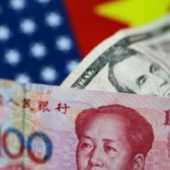
Investing.com– Oil prices dipped on Friday but remained on track for a weekly gain, driven by OPEC+’s decision to delay production increases and the risk of further supply disruptions in the U.S
At 07:25 ET (12:25 GMT), futures fell about 1% to $74.89 a barrel, while West Texas Intermediate dropped 1.2% to $71.47 a barrel.
Oil markets were upbeat in anticipation of more cues on fiscal stimulus in top importer China, while Donald Trump’s victory in the 2024 presidential election also sparked a broad rally across financial markets.
Persistent conflict in the Middle East also saw traders keep some risk premium in oil prices, as Israel continued its offensive against Hamas and Hezbollah in Gaza and parts of Lebanon.
Oil buoyed by OPEC+ delay, US weather watch
The biggest point of support for oil markets this week was the Organization of Petroleum Exporting Countries and allies (OPEC+) stating that it will delay plans to begin increasing production from December.
The cartel had slashed production by nearly 6 million barrels per day over the past two years to support prices, with these cuts now set to remain in play for longer.
Caution over Hurricane Rafael also buoyed oil prices this week, as several energy operators evacuated their operations in the Gulf of Mexico as the storm makes its way through the oil-rich region.
China stimulus awaited from NPC meeting
Oil markets were now focused squarely on a meeting of China’s National People’s Congress, where the body is widely expected to outline more stimulus measures.
The meeting began earlier this week and is set to conclude on Friday.
Beijing had announced a slew of monetary and fiscal measures over the past month, aimed at boosting the economy. But increased fiscal spending can only be approved by the NPC, which is what the body is expected to do this week.
Analysts expect at least 10 trillion yuan ($1.6 trillion) in new spending, with economic growth in the world’s biggest oil importer set to improve on the new measures.
(Ambar Warrick contributed to this article.)
















